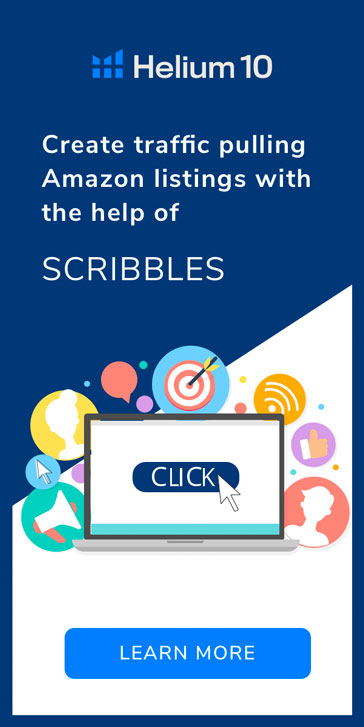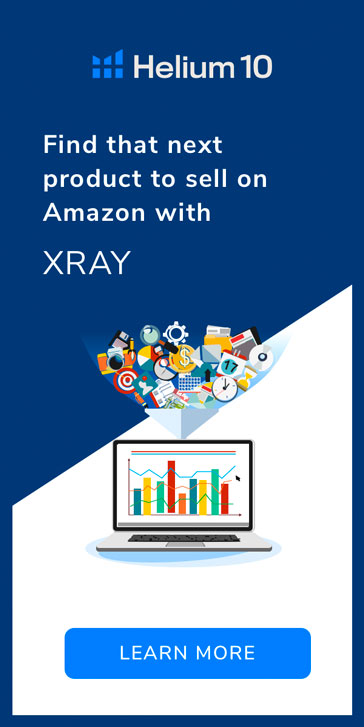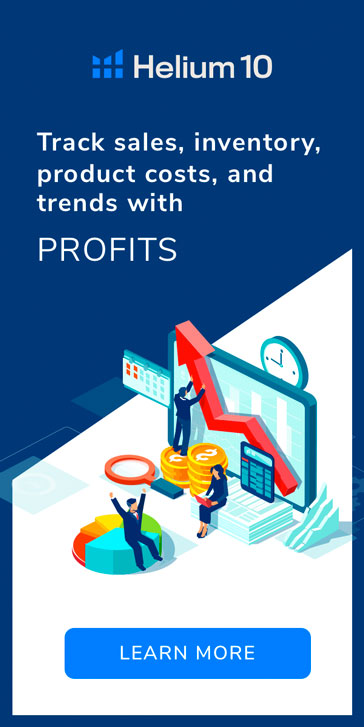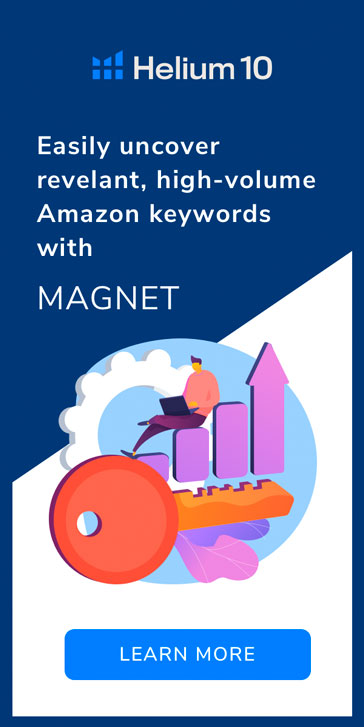You’re an Amazon seller and don’t sell in foreign markets yet? Then you miss out on a number of advantages.
If you sell internationally, you have access to millions of potential customers and can thus, make more sales.
Not only your revenue will grow, but you can also increase your profit margin.
If you order higher quantities from your manufacturer, they will likely give you volume discounts.
Another advantage is that your risk will be diversified.
If, for example, your account is suspended in one country or the country is hit by a recession, you can still sell on other marketplaces and make up for your loss.
However, despite the enormous potential of selling internationally, many Amazon sellers are not going global because they fear other laws, cultures and the geographical distance.
Indeed, when entering a foreign marketplace there are some things you need to keep in mind.
But that shouldn’t stop you from becoming a successful international entrepreneur.
We will show you the steps necessary to enter a new marketplace:
1 Choose your Product
First of all, you need to think about your product. If you already have a successful product, it’s probably a good idea to sell it in the new marketplace.
But be careful: not all products are suitable for all marketplaces.
A simple example: Let’s say you already sell dog food that contains beef in the US and you want to tap into the German market.
Germany is the richest EU country, Germans love to spoil their dogs and they eat a lot of beef.
Thus, your product seems to be very suitable for Amazon.de.
However, if you want to sell on the Indian marketplace, you will have to think about a new product.
80% of the Indians are Hindus and in the Hindu religion, cows are sacred.
You can imagine how successfully your beef dog food will sell there.
Culture, tradition, infrastructure and even climate are all factors that influence your product choice.
I mean, try selling snow shovels to Mexicans.
2 Develop a Branding Strategy
Branding. THE buzzword in recent years within the Amazon seller community.
And for good reason. The “goldrush” is over, buying cheap white-label products from China and selling them on Amazon at utopian margins with hardly any competition doesn’t work anymore.
If you want to be a successful seller today, you need a great product and a strong brand. If you don’t have a brand strategy yet, then it’s about time you develop one.
You already have one?
Well done.
But does that mean that your work is done?
Absolutely not.
In fact, you have to adapt your brand strategy to each individual target market.
From the name of your products to the overall positioning to the actual design of your listing and your ad campaigns: everything has to be adapted to the characteristics and needs of your customers in the respective country.
Let’s assume that you sell bed linen in the UK under the brand name LAID. It fits your products well, it’s a nice wordplay and easy to remember.
If you want to sell the same products in France, however, the name will be problematic – “laid” is the french word for “ugly”.
Would you be appealed by a listing that says UGLY cushion cover?
Yeah, didn’t think so.
How you position your products also depends on your competition.
Let’s say that you successfully sell make-up brushes.
Most (or) all of your competitors sell plastic ones, while you use only natural materials.
You position your product as environmentally friendly and your brand as sustainable.
This is what makes you different from your competition and why people choose your brand.
In your target market, however, there are 20 competitors who claim to be particularly eco friendly.
Thus, you may have to position your brand a little differently to stand out, as environmental consciousness is no longer perceived as special feature, but the standard.

3 Get familiar with Tax Regulations & Laws
Now to the fun part: taxes, laws and regulations.
We know it’s an annoying issue and that you’d like to get around it, but you need to pay your taxes (unless you’re Jeff Bezos).
If you do not obey the legal system, you will eventually have to pay high fines
In the worst case, that may force you to give up your business in the country.
So get informed in advance about product safety laws, import and liability regulations, and applicable tax obligations.
In addition, you should make sure that your product name, brand name or design don’t violate any trademarks or patents.
The best thing to do is to invest in a local lawyer and a tax consultant.
This way you can be sure that you are 100% compliant and take advantage of every tax and legal loophole there may be.
4 Think of Logistics
You have your product, your brand strategy and you’ve made sure that you don’t go straight to jail as soon as you launch your product.
Good job.
Now you have to think about logistics – starting with production.
In some cases it can make sense to have your product manufactured in the country where you want to sell.

Let’s take the trade war between the USA and China as an example. If the import tariffs get too high for your kind of product and you want to enter the North American market, it might make sense to look for a local US factory.
No matter where you end up producing, you need to make sure that your product will be delivered safely from your manufacturer to the Amazon warehouse.
In most cases, you will use a temporary storage facility to avoid the high storage costs of Amazon.
Get different offers from fulfillment centers, compare prices and reviews, and see how well the communication works. A fast response rate is an important indicator of quality.
5 Create an awesome Listing
Now it’s time to market your product well. But before you start thinking about PPC (don’t worry, we’ll get to that), make sure you have a perfect listing.
It doesn’t do you any good to drive many potential customers to your listing if your listing – well – sucks.
Again, think about cultural peculiarities in your target market and hire local SEO experts and copywriters.
Make sure your product descriptions are translated by a professional agency. NEVER (and I can’t stress this enough) EVER use Google translate and the like.
It’s also not a good idea to copy a listing that you already use in another country and just translate the text and keywords.
The search behavior varies from country to country, so each country needs a unique SEO approach.
The photographer doesn’t necessarily have to be a local business, but should also be aware of what will work with customers in that country and what doesn’t.
Especially when it comes to model and lifestyle photos, cultural sensitivity is required.
For example, revealing model photos can work well in your country, but be perceived as highly inappropriate in others.
6 Manage your payments
Here comes the best part. It’s about dollars, euros, pesos and yen – or short – money.
When you sell in another country, you will probably have to deal with a different currency.
Fortunately, many companies have found great and easy solutions for online sellers to facilitate cross-border payments.
Find an international payment provider that suits you and your business and set up an international account.
This way, handling different currencies, exchange rate fluctuations and the transfer to your bank account will be easier than ever.
7 Set up your PPC campaigns
In the last step, it’s time to draw people’s attention to your product.
Of course, it’s an obvious choice to run PPC campaigns.
Similar to SEO you should use a local PPC agency or at least one that employs native speakers.
Targeting the right keywords is essential for the success of your campaigns, someone who speaks the local language and knows the search behaviour will help make your ads a success.

Summary / Checklist
- Conduct product research for every single marketplace you want to sell in. Don’t just look at the numbers, but put on your buyers hat. Do some research about the culture, climate and society and ask yourself: “Why would I buy this? Why not?”
- Check if your current brand strategy is suitable for your target market. If not, adjust it to the country’s culture and preferences.
- Get familiar with laws and tax regulations. Invest in a local legal advisor and tax consultant to play it safe.
- Set up a logistics system. It can make sense to get your product produced in the country you’re selling it in. Hire a fulfillment center to store your products and send them to the Amazon warehouse when needed. Storage fees will be lower and you won’t run out of stock.
- Create a listing that is tailored to local preferences. Work with a local SEO company, they know the search behaviour and language and can create optimized compelling copy.
- Set up a global currency account to ensure a fast a hassle-free transfer of your payments. There are many different payment providers that offer great exchange rates and charge less for cross-border payments than Amazon does.
- Work with a local PPC agency to set up a PPC campaign. This will help you get your first sales and reviews.
Kristina is the head of business development at Sermondo. See how she helps Amazon sellers here.
Original post from How to successfully Enter a Foreign Amazon Marketplace – 7 Steps – Helium 10





























